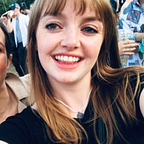BuddyUp: A Sporting Social Network
Designing for a partner
For many, exercise is crucial to not just the body, but the mind also. Whilst playing sports is known for keeping us fit and healthy, as well as appealing to our competitive nature, it is also a way to expand our social lives and give us a sense of belonging. Picture having a social life heavily interlinked with a sporting life and this being uprooted with the move to a new city. BuddyUp acts as a social networking site for sports to link users up with nearby events and profiles.
Research
I based the concept for my app on in depth interviews with a partner, Tommy. The aim was to find an issue in Tommy’s life that an app would be able to assist with, or, ideally, solve. Considering it was the first day of the entire course, I thought it best to start by simply getting to know Tommy in casual conversation and finding out about his everyday life.
Conversation soon turned on to the topic of sports. It was evident that sports is an incredibly important part of Tommy’s life — both for exercise and more importantly the social side. When asked about up keeping his sports habits post-move to London, he replied:
‘I just have no idea where to begin to look to find sports teams’
It was then that I began to get an initial idea of how an app could assist Tommy.
Concept Mapping
After coming up with the initial idea I planned and asked open questions around Tommy’s sports habits so as to get a clearer idea of how an app might help him. The picture above shows how I grouped ideas from my research notes together.
The Problem and The Solution
The storyboard below demonstrates the problem and proposed solution.
With research completed and a clear problem statement in mind, I began to think in more detail about the features BuddyUp could have to improve Tommy’s life and solve the problem.
I concluded that BuddyUp would aim to help the user by allowing the user to see and connect with events and sports players near him at their earliest convenience.
From Research to Design
For the purpose of this project I focused on a primary user goal, being:
Find and attend a football match near you today
I created a User Flow for the primary goal which allowed me to think more clearly about exactly what screens would be necessary and the navigation to achieve this goal. I then created a Screen Flow from the User Flow. Preliminary feedback on this allowed me to realise more screens were necessary for the process.
The sketches below show my original paper prototypes for achieving the primary user goal, followed by the revised ones post-feedback (on the row below).
I ran three paper prototype user tests, each one with different feedback raised. It was therefore necessary for me to establish the common themes in order to decide the revisions that I was going to make.
Feedback on the original home screen was that the navigation at the top was far too busy, and the search icon wasn’t obvious enough. I changed the search icon to a large search button at the bottom of the page. Further, the tick at the top of the event profile wasn’t easy for users to understand as a way to signal attendance of the event. Instead, they would want to just click straight into it. In addition to this, the navigation circles at the top (allowing the user to switch between nearby events or profiles) were not clear as to what they signified because there was no labelling. On the next iteration I changed the wording from ‘Near You’ to ‘Events Nearby’.
On the search page, it seemed odd to the users to have 2 buttons ‘Buddy’, ‘Event’ and ‘Search’. They would expect that once they had chosen between Buddy or Event the app would start the search straight away, without having to press a search button.
The event listing page shows a summary of the event with a tick to signal attendance. Testing proved the tick was not clear to signal attendance, nor would users expect to be able to attend from the summary, but instead would expect to click to get more detail and then attend.
On the event listing page, the tick for attendance is in the top right. I found from testing that this wasn’t clear, and users would expect a very clear call to action at the bottom of the information. I therefore implemented a ‘Let’s Go!’ button.
Clickable Prototype
Outcome
The user has a seamless and efficient way of finding sporting events and users near him/her at his/her fingertips.
Future steps for BuddyUp include working on the other features of the app. Suggestions from feedback included having recommendations from other users on profiles and having a ‘Favourites/Interested’ page. I would also like to add smart matches for users with similar sporting interests and the option for regular attendance to events.
During visual design week I added a visual layer on top of the wireframes, and made some further functional changes that arose from feedback during testing of the visual design. To read further, see my ‘Visual Design’ case study:
